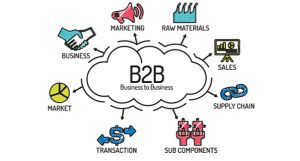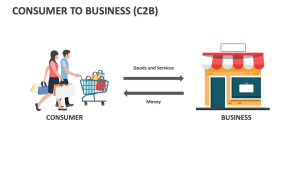Exploring the Four Distinct Models of E-Commerce
Exploring the Four Distinct Models of E-Commerce
E-commerce has transformed the way businesses and consumers interact, creating multiple business models that cater to different needs and markets. Let’s explore the four primary e-commerce models:
- Business-to-Consumer (B2C)
- Consumer-to-Consumer (C2C)
- Business-to-Business (B2B)
- Consumer-to-Business (C2B)
The online business activities of government agencies use Business-to-Administration (B2A) and Consumer-to-Administration (C2A) terminology. An organization provides software solutions to governmental agencies through B2A operations while consumers can utilize C2A systems to pay utility bills online.
________________________________________
Business-to-Consumer (B2C) E-Commerce

Business-to-Consumer (B2C) represents the dominant form of e-commerce that enables companies to transact their goods or services to individual customers. E-commerce history credits Pizza Hut with executing the world’s initial online purchase of a pizza. Dan Kohn created history when he sold a CD album through an encrypted online system to secure customers’ credit card details after encrypting them in 1994.
The B2C e-commerce industry currently achieves billions in revenue through standard practice transactions secured by encryption. Digital marketing demonstrates significant importance to B2C success by delivering these special marketing disciplines:
- Experiential Marketing: Encouraging consumers to engage emotionally with a product or brand.
- Social Media Marketing: Creating engaging content for platforms like Instagram, Facebook, and TikTok to promote products.
- Influencer Marketing: Leveraging influencers to endorse brands to their followers, increasing credibility and reach.
Consumer-to-Consumer (C2C) E-Commerce

Through C2C e-commerce individual customers exchange products as well as service offerings among themselves. The Boston Computer Exchange established its operations in 1982 as the initial platform focused on C2C sales, which enabled users to conduct both product exchanges and computer sales. Ever since its launch in 1995 eBay continues to stand as one of the most popular Consumer-to-consumer e-commerce platforms.
The major C2C trading platforms operate today through eBay, Etsy, and both the Amazon Marketplace and Facebook Marketplace. C2C businesses in digital marketing pursue various strategies which include:
- Search Engine Optimization (SEO): Ensuring products appear in search results.
- Content Creation: Engaging blog posts, videos, and social media content to attract buyers.
- Social Media Marketing: Leveraging online communities to facilitate transactions.
________________________________________
Business-to-Business (B2B) E-Commerce

B2B e-commerce refers to transactions between businesses. Software-as-a-Service (SaaS), among other software services, drives the continuous expansion of business-to-business commerce at a fast pace. The subscription-based CRM (customer relationship management) software provider Salesforce started its operations in 1999.
The marketing strategy for B2B enterprises needs different methods from B2C since they demand both a data-oriented method combined with strategic planning.
- Targeted Marketing Strategies: Identifying niche business audiences with precise messaging.
- Marketing Analytics & Data: Leveraging data to refine campaigns and increase conversions.
- Content Marketing: Creating white papers, case studies, and industry reports to establish authority.
________________________________________
Consumer-to-Business (C2B) E-Commerce

C2B e-commerce has expanded because of emerging freelancing and influencer marketing trends. Businesses obtain products or services from individual sellers based on this e-commerce model. Upwork serves as an example of the hosting platforms that unite freelancers with businesses who require particular skills since its launch in 2015.
Social media influencers work as part of this category because they provide marketing services to businesses that want to expand their reach to new audiences. Social media expansion has fueled the growth of Customer-to-Business e-commerce into a significant e-commerce trend through its new commercial opportunities.
- Freelancing Platforms: Marketplaces for independent professionals.
- Influencer Marketing: collaboration between individuals and brands.
- User-Generated Content: Consumers contribute reviews and testimonials that businesses use for promotion.
________________________________________
Conclusion
E-commerce systems remain active in permanent evolution to open up distinct business prospects together with individual possibilities. Learning about e-commerce models will guide consumers purchasing online products and craftmakers setting up their businesses, as well as corporate users of digital tools and freelancers extending their services through digital platforms.

